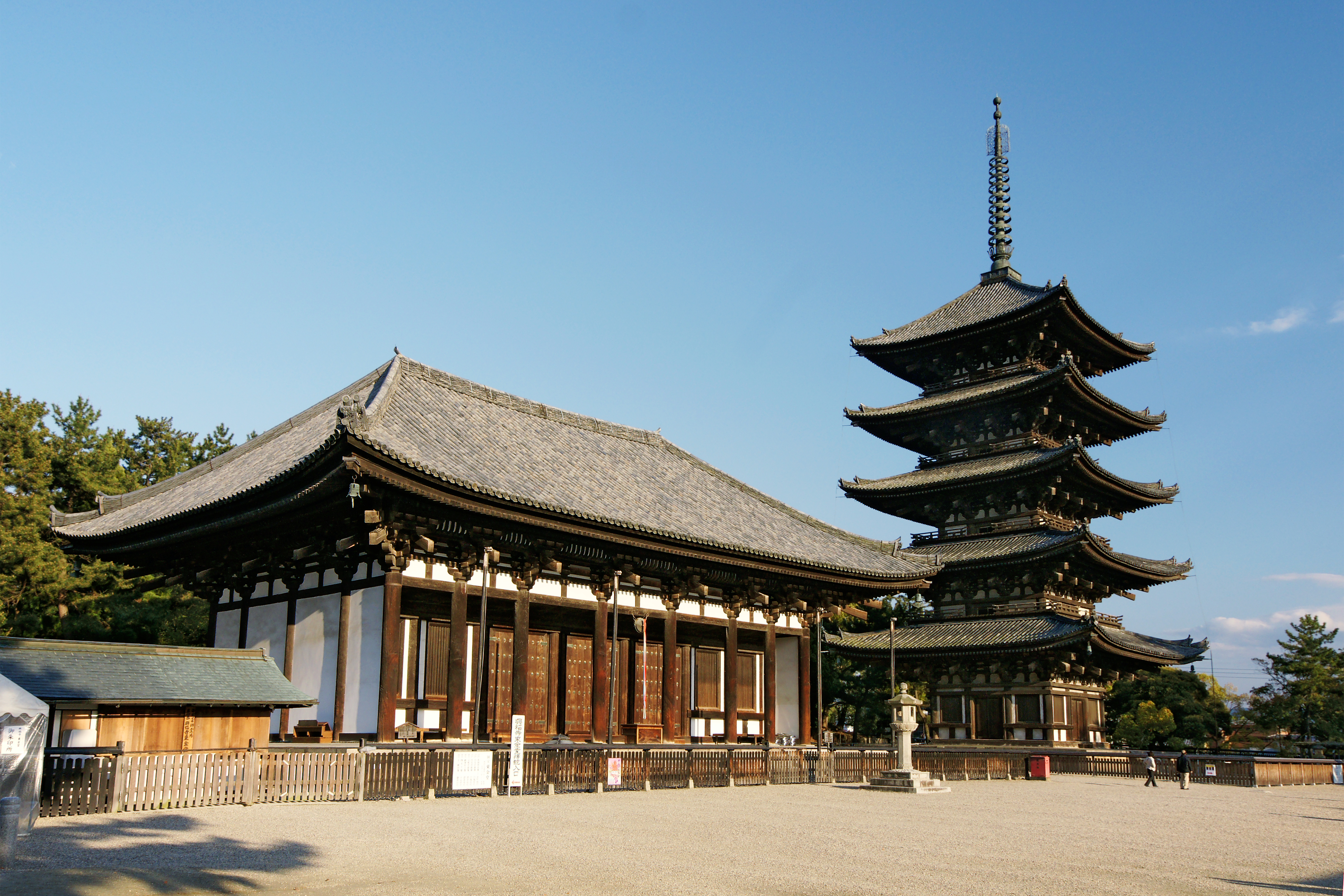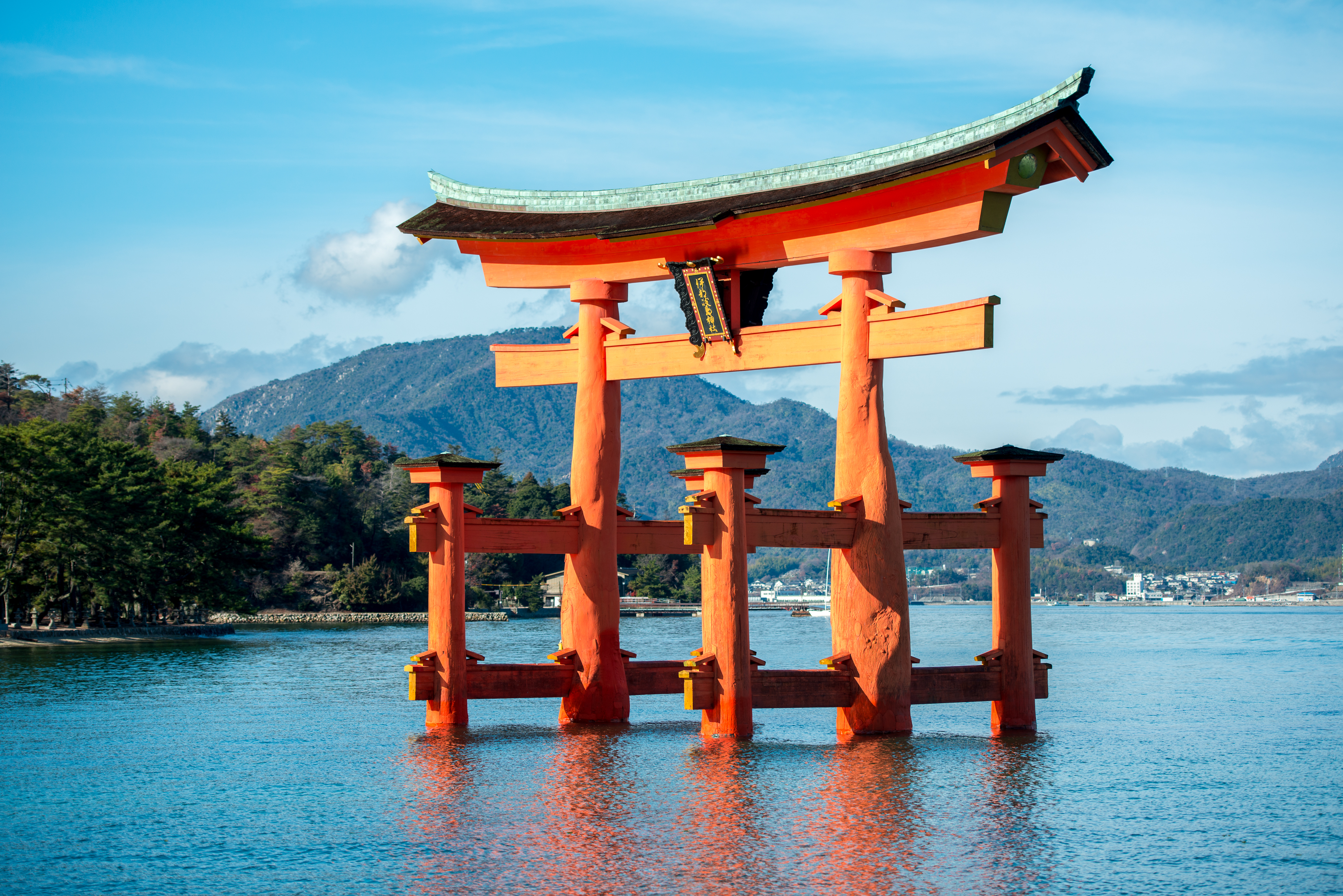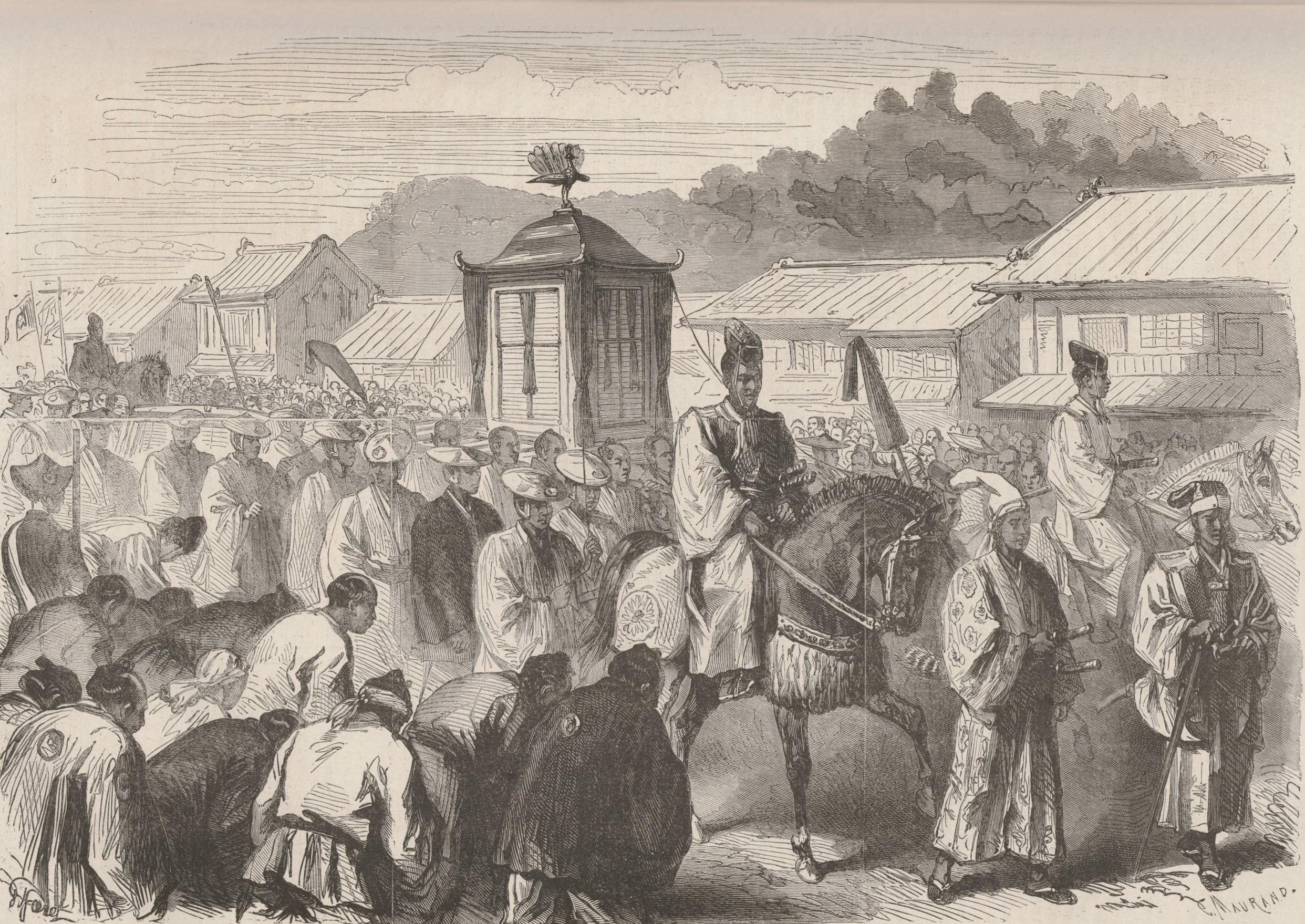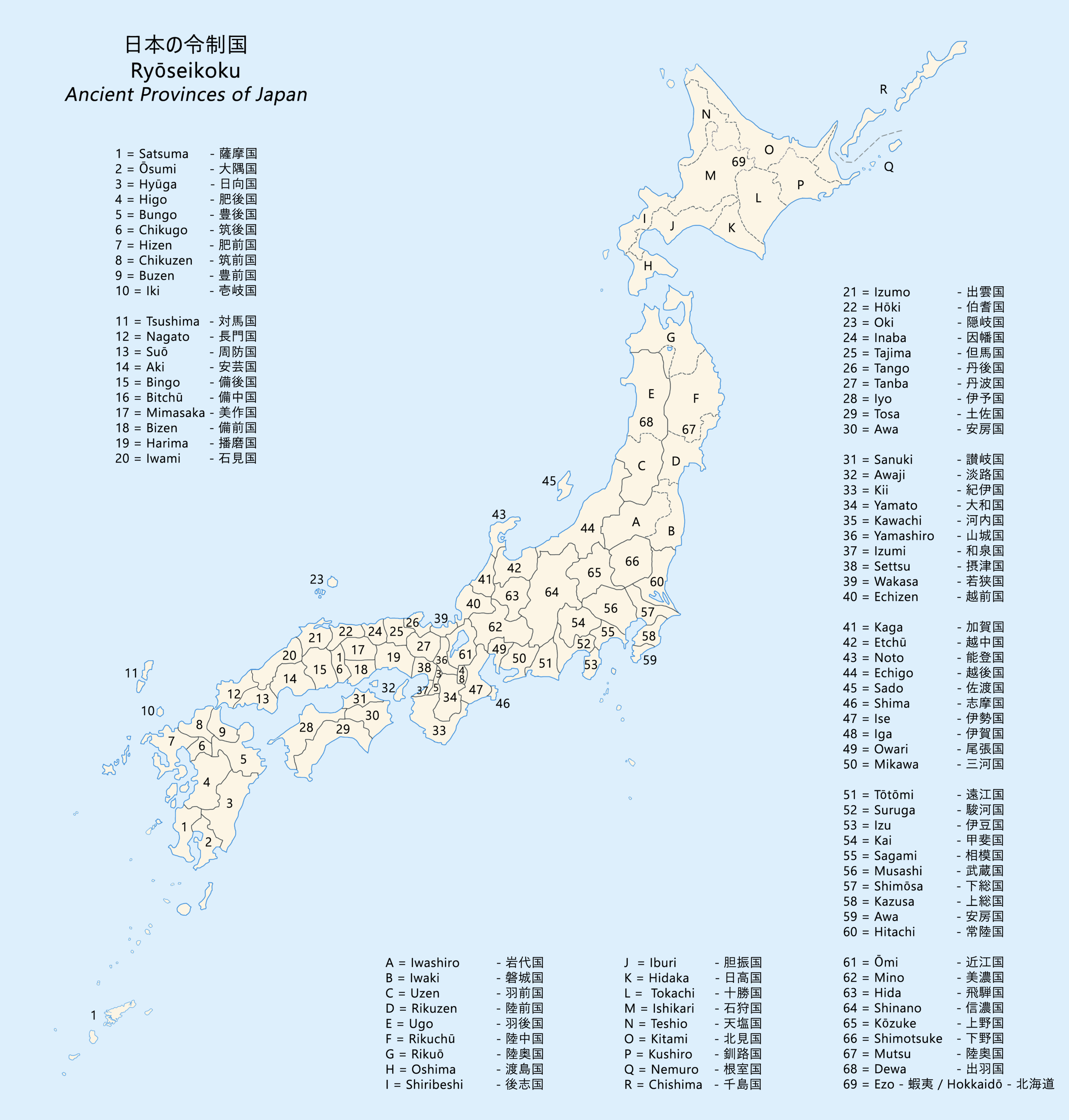|
Hōryū-ji Temple
is a Buddhist temple that was once one of the powerful Seven Great Temples, located in Ikaruga, Nara Prefecture, Japan. Built shortly after Buddhism was introduced to Japan, it is also one of the oldest Buddhist sites in the country. Its full name is , or Learning Temple of the Flourishing Law, with the complex serving as both a seminary and monastery. The temple was founded by Prince Shōtoku in 607. According to the ''Nihon Shoki'', in 670 all buildings were burned down by lightning. Reconstruction of the temple complex began soon after. Rebuilt at least 1,300 years ago, the Kondō (main hall) is widely recognized as the world's oldest wooden building. A tree ring survey conducted in 2001 revealed that the shinbashira of the five-story pagoda were cut down in 594, before it burned down in 670. On January 26, 1949, a fire broke out during the dismantling and repair of the Kondō. This heavily damaged the building and also destroyed a mural of the Asuka period, a national tre ... [...More Info...] [...Related Items...] OR: [Wikipedia] [Google] [Baidu] |
Buddhist Monuments In The Hōryū-ji Area
The UNESCO World Heritage Site Buddhist Monuments in the Hōryū-ji Area includes a variety of buildings found in Hōryū-ji and Hokki-ji in Ikaruga, Nara, Ikaruga, Nara Prefecture, Japan. These buildings were designated in 1993 along with the surrounding landscape, under several criteria. The structures inscribed are some of the oldest extant wooden buildings in the world, dating from the 7th to 8th centuries. Many of the monuments are also National Treasures of Japan, and reflect an important age of Buddhism, Buddhist influence in Japan. The structures include 21 buildings in the Hōryū-ji East Temple, 9 in the West Temple, 17 monastery, monasteries and other buildings, and the pagoda in Hokki-ji. Horyuji Kondo The kondo, also known as the Golden Hall is located within the gates of the Horyuji temple complex. The structure sits near the center next to the Horyuji Pagoda. The two structures are significant, yet for very different reasons. The Kondo was built with the intention ... [...More Info...] [...Related Items...] OR: [Wikipedia] [Google] [Baidu] |
Meiji Restoration
The , referred to at the time as the , and also known as the Meiji Renovation, Revolution, Regeneration, Reform, or Renewal, was a political event that restored Imperial House of Japan, imperial rule to Japan in 1868 under Emperor Meiji. Although there were ruling emperors before the Meiji Restoration, the events restored practical power to, and consolidated the political system under, the Emperor of Japan. The Restoration led to enormous changes in Japan's political and social structure and spanned both the late Edo period (often called the Bakumatsu) and the beginning of the Meiji era, during which time Japan rapidly Industrialization, industrialised and adopted Western culture, Western ideas and production methods. The origins of the Restoration lay in economic and political difficulties faced by the Tokugawa shogunate. These problems were compounded by the encroachment of foreign powers in the region which challenged the Tokugawa policy of , specifically the arrival of the Pe ... [...More Info...] [...Related Items...] OR: [Wikipedia] [Google] [Baidu] |
Kōfuku-ji
is a Buddhist temple that was once one of the powerful Seven Great Temples in the city of Nara, Japan. The temple is the national headquarters of the Hossō school. It is part of Historic Monuments of Ancient Nara, a World Heritage Site. History Kōfuku-ji has its origin as a temple that was established in 669 by Kagami-no-Ōkimi (), the wife of Fujiwara no Kamatari, wishing for her husband's recovery from illness. Its original site was in Yamashina, Yamashiro Province (present-day Kyoto). In 672, the temple was moved to Fujiwara-kyō, the first planned Japanese capital to copy the orthogonal grid pattern of Chang'an. In 710, the temple was dismantled for the second time and moved to its present location, on the east side of the newly constructed capital, Heijō-kyō, today's Nara. Kōfuku-ji was the Fujiwara's tutelary temple, and enjoyed prosperity for as long as the family did. The temple was not only an important center for the Buddhist religion, but also retained ... [...More Info...] [...Related Items...] OR: [Wikipedia] [Google] [Baidu] |
Shinto
, also called Shintoism, is a religion originating in Japan. Classified as an East Asian religions, East Asian religion by Religious studies, scholars of religion, it is often regarded by its practitioners as Japan's indigenous religion and as a nature religion. Scholars sometimes call its practitioners ''Shintoists'', although adherents rarely use that term themselves. With no central authority in control of Shinto, there is much diversity of belief and practice evident among practitioners. A polytheism, polytheistic and animism, animistic religion, Shinto revolves around supernatural entities called the (神). The are believed to inhabit all things, including forces of nature and prominent landscape locations. The are worshipped at household shrines, family shrines, and Shinto shrine, ''jinja'' public shrines. The latter are staffed by priests, known as , who oversee offerings of food and drink to the specific enshrined at that location. This is done to cultivate harmony ... [...More Info...] [...Related Items...] OR: [Wikipedia] [Google] [Baidu] |
Meiji Period
The was an era of Japanese history that extended from October 23, 1868, to July 30, 1912. The Meiji era was the first half of the Empire of Japan, when the Japanese people moved from being an isolated feudal society at risk of colonization by Western powers to the new paradigm of a modern, industrialized nation state and emergent great power, influenced by Western scientific, technological, philosophical, political, legal, and aesthetic ideas. As a result of such wholesale adoption of radically different ideas, the changes to Japan were profound, and affected its social structure, internal politics, economy, military, and foreign relations. The period corresponded to the reign of Emperor Meiji. It was preceded by the Keiō era and was succeeded by the Taishō era, upon the accession of Emperor Taishō. The rapid modernization during the Meiji era was not without its opponents, as the rapid changes to society caused many disaffected traditionalists from the former samu ... [...More Info...] [...Related Items...] OR: [Wikipedia] [Google] [Baidu] |
Edo Period
The , also known as the , is the period between 1600 or 1603 and 1868 in the history of Japan, when the country was under the rule of the Tokugawa shogunate and some 300 regional ''daimyo'', or feudal lords. Emerging from the chaos of the Sengoku period, the Edo period was characterized by prolonged peace and stability, urbanization and economic growth, strict social order, Isolationism, isolationist foreign policies, and popular enjoyment of Japanese art, arts and Culture of Japan, culture. In 1600, Tokugawa Ieyasu prevailed at the Battle of Sekigahara and established hegemony over most of Japan, and in 1603 was given the title ''shogun'' by Emperor Go-Yōzei. Ieyasu resigned two years later in favor of his son Tokugawa Hidetada, Hidetada, but maintained power, and defeated the primary rival to his authority, Toyotomi Hideyori, at the Siege of Osaka in 1615 before his death the next year. Peace generally prevailed from this point on, making samurai largely redundant. Tokugawa sh ... [...More Info...] [...Related Items...] OR: [Wikipedia] [Google] [Baidu] |
Kannon
Guanyin () is a common Chinese name of the bodhisattva associated with Karuṇā, compassion known as Avalokiteśvara (). Guanyin is short for Guanshiyin, which means "[The One Who] Perceives the Sounds of the World". Originally regarded as male in Indian Buddhism, Guanyin has been more commonly depicted as female in China and most of East Asia since about the 12th century. Due to sociogeographical factors, Guanyin can also be historically depicted as genderless or adorning an androgynous apprentice. On the 19th day of the sixth lunar month, Guanyin's attainment of Buddhahood is celebrated. Guanyin has been incorporated in other religions, including Taoism and Chinese folk religion. Some Buddhists believe that when one of their adherents departs from this world, they are placed by Guanyin in the heart of a sacred lotus in religious art, lotus and then sent to the western pure land of Sukhāvatī. Guanyin is often referred to as the "most widely beloved Buddhist Divinity" with ... [...More Info...] [...Related Items...] OR: [Wikipedia] [Google] [Baidu] |
Bodhisattva
In Buddhism, a bodhisattva is a person who has attained, or is striving towards, '' bodhi'' ('awakening', 'enlightenment') or Buddhahood. Often, the term specifically refers to a person who forgoes or delays personal nirvana or ''bodhi'' in order to compassionately help other individuals reach Buddhahood. In the Early Buddhist schools, as well as modern Theravāda Buddhism, bodhisattva (or bodhisatta) refers to someone who has made a resolution to become a Buddha and has also received a confirmation or prediction from a living Buddha that this will come to pass. In Theravāda Buddhism, the bodhisattva is mainly seen as an exceptional and rare individual. Only a few select individuals are ultimately able to become bodhisattvas, such as Maitreya. In Mahāyāna Buddhism, a bodhisattva refers to anyone who has generated '' bodhicitta'', a spontaneous wish and compassionate mind to attain Buddhahood for the benefit of all sentient beings. Mahayana bodhisattvas are spiritua ... [...More Info...] [...Related Items...] OR: [Wikipedia] [Google] [Baidu] |
Heian Period
The is the last division of classical Japanese history, running from 794 to 1185. It followed the Nara period, beginning when the 50th emperor, Emperor Kammu, moved the capital of Japan to Heian-kyō (modern Kyoto). means in Japanese. It is a period in Japanese history when the Chinese influence on Japanese culture, Chinese influences were in decline and the national culture matured. The Heian period is also considered the peak of the Japanese Emperors of Japan, imperial court, noted for its Japanese art, art, especially Japanese poetry, poetry and Japanese literature, literature. Two syllabaries unique to Japan, katakana and hiragana, emerged during this time. This gave rise to Japan's famous vernacular literature, with many of its texts written by court ladies who were not as educated in Chinese as their male counterparts. Although the Imperial House of Japan had power on the surface, the real power was in the hands of the Fujiwara clan, a powerful Kuge, aristocratic family wh ... [...More Info...] [...Related Items...] OR: [Wikipedia] [Google] [Baidu] |
Kamakura Period
The is a period of History of Japan, Japanese history that marks the governance by the Kamakura shogunate, officially established in 1192 in Kamakura, Kanagawa, Kamakura by the first ''shōgun'' Minamoto no Yoritomo after the conclusion of the Genpei War, which saw the struggle between the Taira clan, Taira and Minamoto clan, Minamoto clans. The period is known for the emergence of the samurai, the warrior caste, and for the establishment of feudalism in Japan. There are various theories as to the year in which the Kamakura period and Kamakura shogunate began. In the past, the most popular theory was that the year was 1192, when Minamoto no Yoritomo was appointed . Later, the prevailing theory was that the year was 1185, when Yoritomo established the , which controlled military and police power in various regions, and the , which was in charge of tax collection and land administration. Japanese history textbooks as of 2016 do not specify a specific year for the beginning of the K ... [...More Info...] [...Related Items...] OR: [Wikipedia] [Google] [Baidu] |
Shichidō Garan
''Shichidō garan'' is a Buddhism in Japan, Japanese Buddhist term indicating the seven Dō (architecture), halls composing the ideal Buddhist temple compound. This compound word is composed of , literally meaning "seven halls", and , meaning "temple". The term is often shortened to just ''garan''. Which seven halls the term refers to varies, and 七堂 may be a misinterpretation of , meaning "complete temple".Iwanami KōjienKōsetsu Bukkyō Daijiten (広説仏教語大辞典) In practice, ''shichidō garan'' often simply means a large temple with many buildings. Etymology and history of the term in Japanese is an abbreviated form of the expression , itself a transliteration of the Sanskrit ''saMghaaraama'' (सँघाराम), literally meaning "garden for monks".JAANUS, ''garan'' A Japanese ''garan'' was originally just a park where monks gathered together with their teacher, but the term later came to mean "Buddhist temples in Japan, Buddhist temple". The word ''garan' ... [...More Info...] [...Related Items...] OR: [Wikipedia] [Google] [Baidu] |










